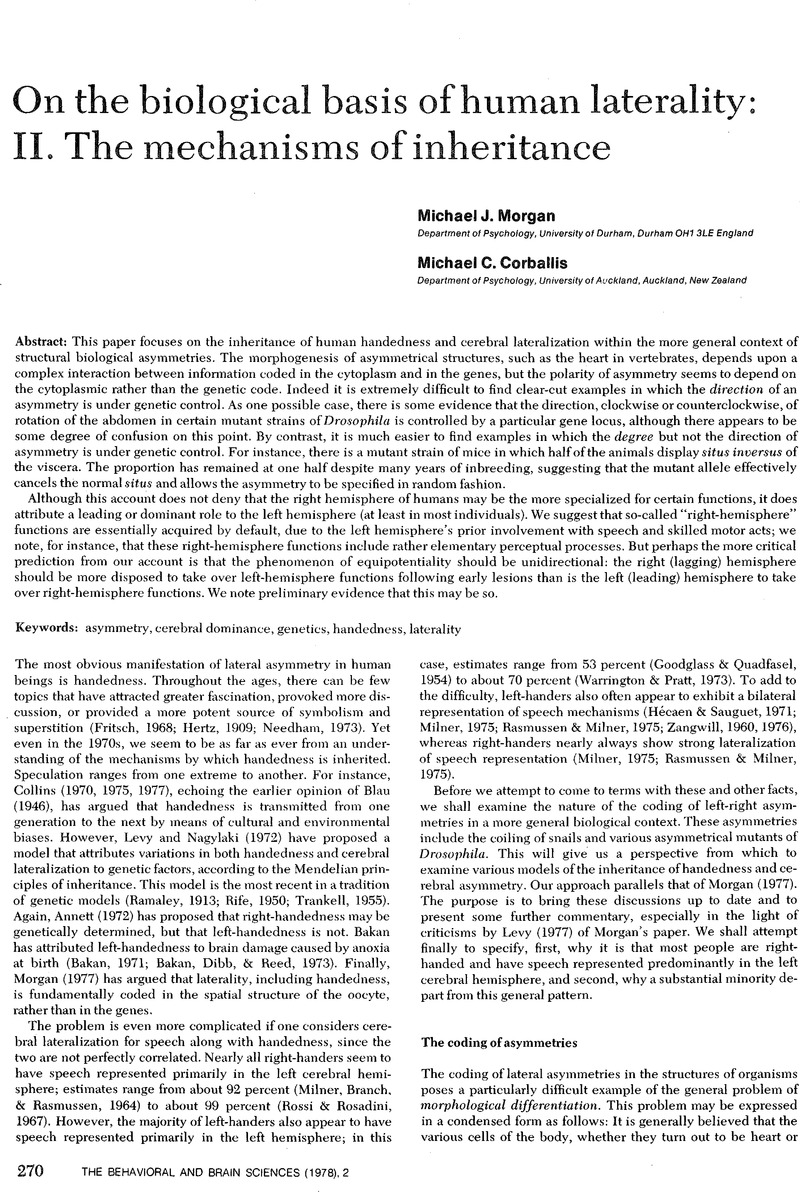Crossref Citations
This article has been cited by the following publications. This list is generated based on data provided by Crossref.
BOKLAGE, CHARLES E.
1980.
Neuropsychology of Left-Handedness.
p.
115.
Boklage, Charles E.
1981.
On the Distribution of Nonrighthandedness Among Twins and Their Families.
Acta geneticae medicae et gemellologiae: twin research,
Vol. 30,
Issue. 3,
p.
167.
Boklage, Charles E.
1987.
Developmental differences between singletons and twins in distributions of dental diameter asymmetries.
American Journal of Physical Anthropology,
Vol. 74,
Issue. 3,
p.
319.
Palmer, A. Richard
1996.
From symmetry to asymmetry: Phylogenetic patterns of asymmetry variation in animals and their evolutionary significance.
Proceedings of the National Academy of Sciences,
Vol. 93,
Issue. 25,
p.
14279.





